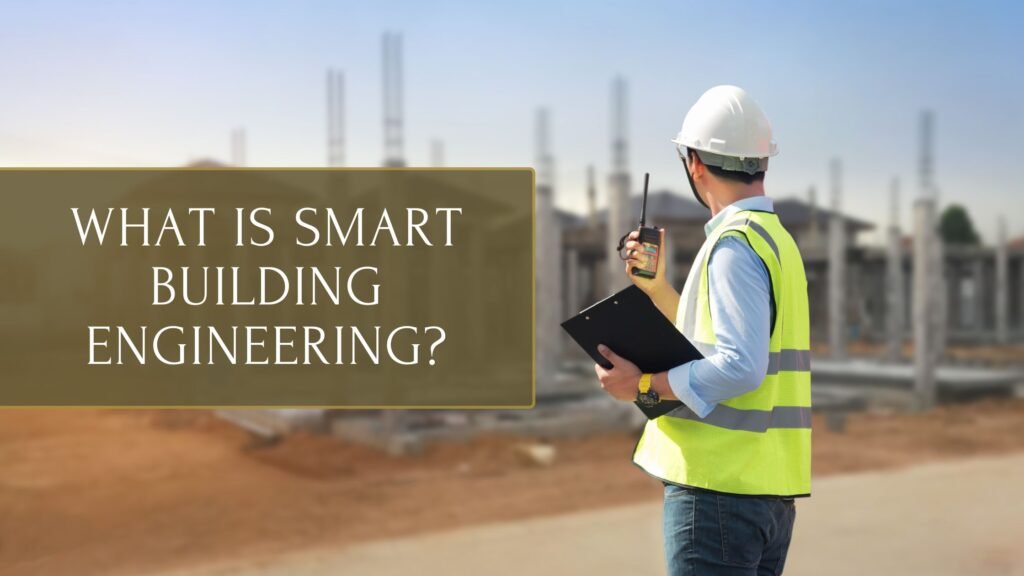Smart building engineering is the practice of designing and integrating intelligent systems into a building’s infrastructure — so it can automatically adapt, optimise performance, and respond to real-time data.
At its core, it connects the mechanical, electrical, plumbing, fire protection (MEPF) systems with digital technologies like:
- Sensors and IoT devices
- Building Management Systems (BMS)
- Automation controls
- Data analytics platforms
- Artificial intelligence (AI) and machine learning
Together, these technologies allow buildings to self-regulate, predict failures, reduce energy consumption, and improve occupant comfort and safety.
From Static to Responsive Design
Traditional buildings operate on fixed schedules and manual controls. Smart buildings, however, make dynamic decisions based on:
- Who is occupying the space
- What time of day it is
- Current temperature or air quality
- Equipment status or maintenance needs
For example:
- Lights dim automatically when natural sunlight is sufficient
- Air conditioning adjusts when occupancy levels change
- Fire protection systems communicate with security and evacuation alerts in real time
The Role of Engineering in Smart Buildings
Smart functionality doesn’t happen by accident — it requires thoughtful design and expert coordination. That’s where smart building engineering comes in.
It means engineering systems are:
- Digitally integrated, not siloed
- Designed for automation, not just operation
- Built for data collection, monitoring, and optimisation
- Compliant with Australian construction standards and sustainability goals
At Decobu, our role is to ensure every service — whether it’s mechanical, electrical, hydraulic, or fire protection engineering — works together as one intelligent, responsive ecosystem.
Why It Matters
Smart building engineering isn’t just about fancy tech — it directly impacts:
- Energy efficiency
- Predictive maintenance and reduced downtime
- Green building compliance (e.g. NABERS, Green Star)
- Health, safety, and occupant comfort
- Long-term asset value and marketability
As sustainability standards tighten and tenants demand smarter spaces, this approach is becoming a baseline expectation — not an innovation.
Frequently Asked Questions (FAQs)
-
What exactly does smart building engineering involve?
Smart building engineering involves integrating technologies like IoT sensors, automation systems, and real-time data monitoring into core MEPF (mechanical, electrical, plumbing, and fire protection) systems. This allows buildings to respond automatically to environmental changes, occupancy, and energy demand.
-
How is smart building engineering different from traditional building design?
Traditional buildings rely on static controls and manual adjustments. Smart buildings, by contrast, use automated systems and data analytics to adapt in real time — improving energy efficiency, comfort, and maintenance responsiveness. It’s a shift from fixed operations to dynamic, intelligent infrastructure.
-
Can smart technologies be retrofitted into older commercial buildings?
Yes. While smart systems are most efficient when integrated during initial design, engineering consultancy firms in Australia like Decobu can retrofit smart HVAC, lighting, fire protection, and energy monitoring systems into existing buildings to improve performance and compliance.
-
Does smart building design help with sustainability ratings?
Absolutely. Smart systems directly support green building engineering goals by reducing energy consumption, lowering emissions, and improving operational efficiency. This can boost NABERS and Green Star ratings, which are essential in the Australian commercial property market.
-
Is smart building engineering only for large-scale developments?
No. While it’s common in commercial towers and campuses, smart building engineering is scalable. Even small offices, retail spaces, or education facilities can benefit from smart HVAC zoning, automated lighting, and intelligent water management — especially when designed with future needs in mind.





